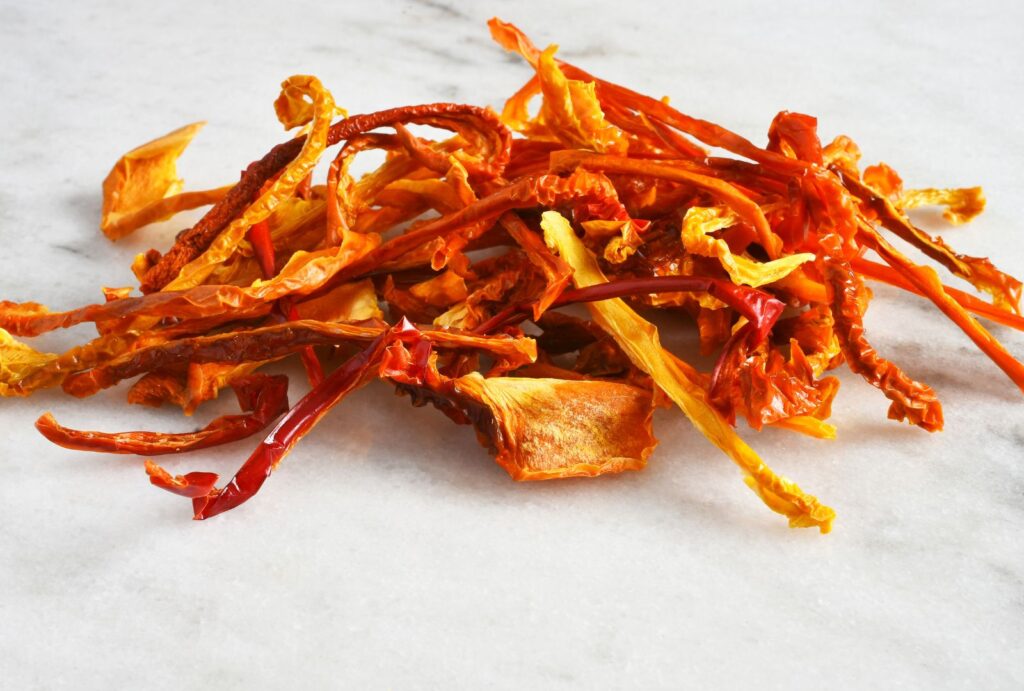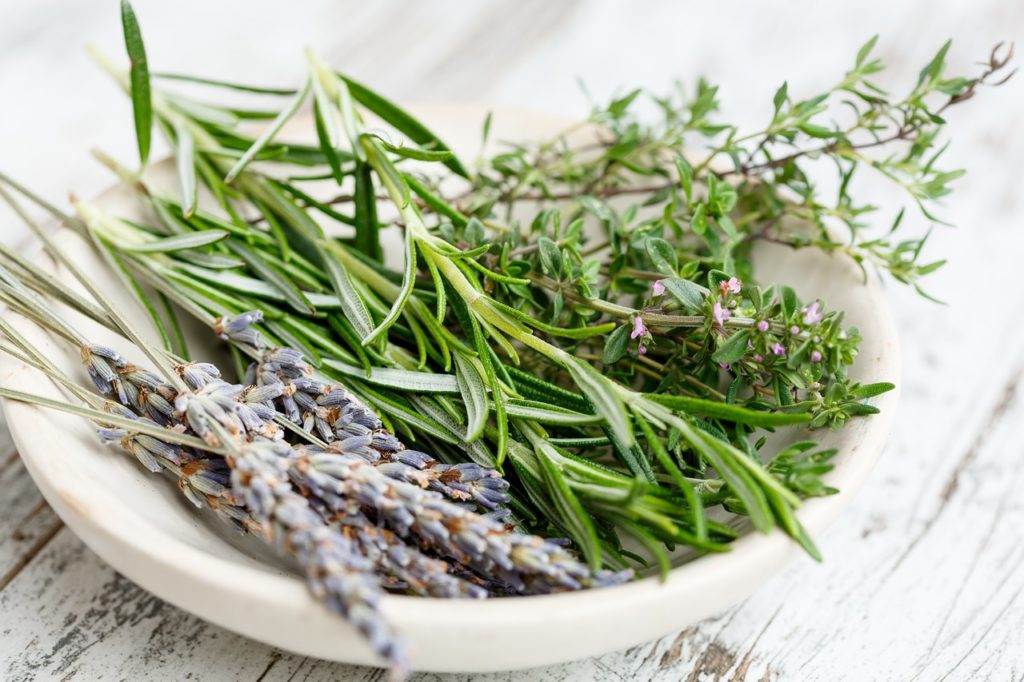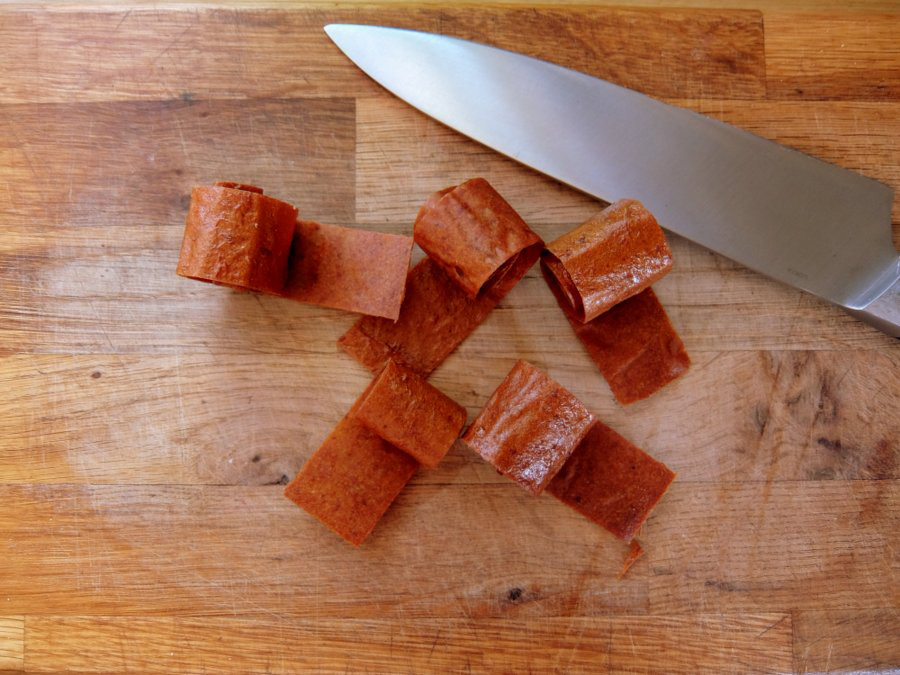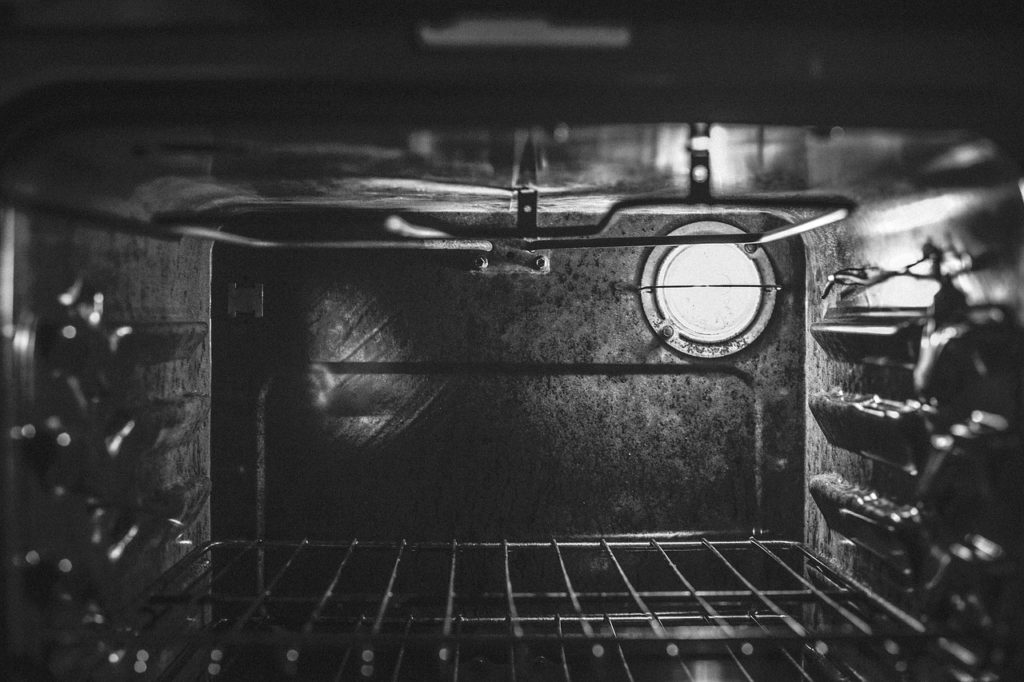Dried peppers, no matter the variety, are one of the most versatile preserved foods you can have on hand. Dehydrating peppers at home is an easy and affordable way to preserve them and one of the most convenient.
When done properly, dehydrated peppers can last for months in your pantry, ready to be rehydrated and added to soups, stews, casseroles and more. The dehydrating process removes moisture from the peppers, slowing the growth of bacteria and enzymes that cause spoilage.
There is of course a huge variety of peppers if you grow your own or shop at farmers markets and the drying process I am about to tell you will work for all of them. Let’s take a look at how to dehydrate peppers.
Table of Contents
All About Dried Peppers
Peppers have been dried for as long as they have been cultivated as a means of preservation, flavour enhancement and trade. Different pepper varieties dry and taste distinctly, adding unique flavours to dishes from around the world.
- Bell peppers, the most common and abundant variety, become slightly sweet and smoky when dried.
- Jalapenos and serranos retain some heat while gaining a deeper, more complex flavour.
- Habaneros become intensely fruity and aromatic.
Traditionally, peppers were dried by hanging strings of whole peppers in a warm, dry place or by laying them on rooftops and in fields to dry in the sun.
While we can still do that today, we now have food dehydrators and low-temperature ovens that have made the process more consistent and controllable, especially when the climate is not great for air drying. No matter the variety or drying method, peppers become shrivelled, leathery and darken in colour as they lose moisture.
Preparing Peppers For Dehydrating
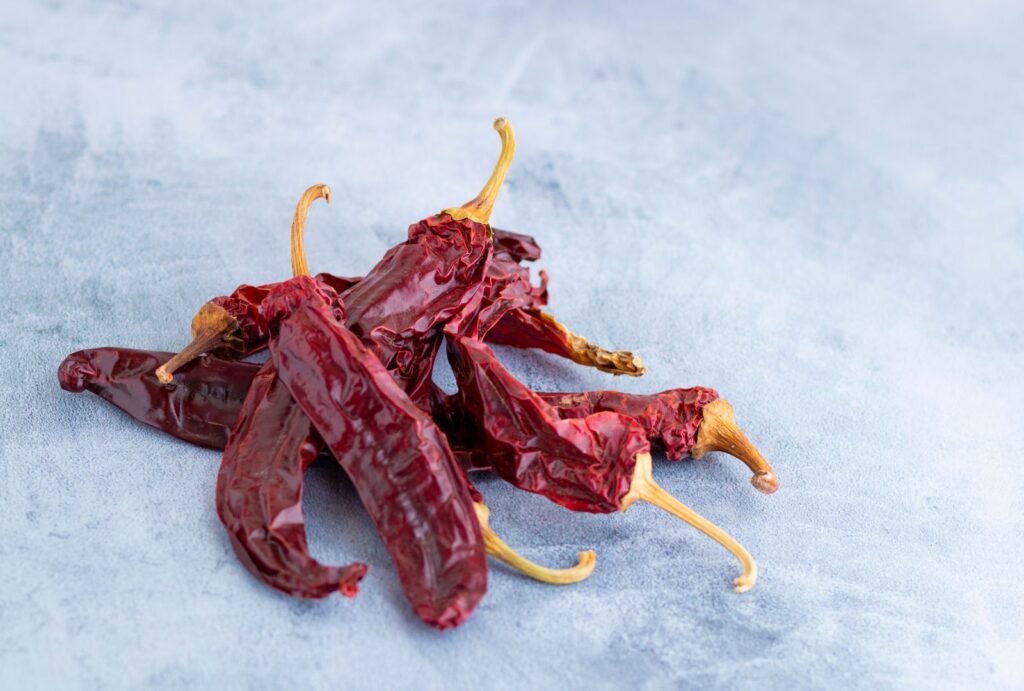
Wash and dry all peppers thoroughly before dehydrating. Any moisture left on the peppers can cause mould and spoilage. Gently rub off any dirt or debris and pat dry with a paper towel.
Bell Peppers and Poblanos: These thick-fleshed peppers are best sliced into strips or rings between 1/4 to 1/2 inch thick for even drying. Halve the peppers lengthwise, remove the core and seeds, and slice into strips. You can also dice the pepper flesh.
Chiles: Thinner chiles like jalapenos, serranos and habaneros can be left whole or halved lengthwise. They dry more quickly due to their thinner flesh. If drying whole, use a sharp knife to make a few slits in the skin to allow moisture to escape.
Thick-fleshed peppers: Peppers with thicker flesh, like bell peppers, poblanos and Anaheim chiles, dry more slowly and unevenly if left whole. To ensure even drying, slice these peppers into strips or rings between 1/4 to 1/2 inch thick. The extra surface area exposed will allow moisture to escape more quickly during dehydration.
Arrange pepper slices or halves in a single layer on dehydrator trays or oven racks, leaving space between each piece. Do not overlap or crowd the peppers. Crowded peppers will steam instead of properly drying.
Do I Need to Pretreat, Blanch or Steam Peppers Before Drying?
Many fruits and vegetables need to be pretreated. That means blanched, steamed or soaked before dehydrating to help deactivate enzymes and ensure even drying. However, peppers do not typically require pretreatment before drying.
Peppers have thick, tough skin that acts as a protective barrier, keeping enzymes contained. As long as the peppers are sliced or halved properly according to their thickness, they can go directly onto the dehydrator trays or oven racks without pretreatment.
For best results, wash and slice or halve peppers as directed in the previous section. The peppers can go directly into the dehydrator or oven without any pretreatment.
Dehydrating Peppers: Dehydrator or Oven Method
Wash and dry the peppers: Start by thoroughly washing the peppers under cool running water. Gently rub off any dirt or debris and pat them dry with a paper towel. This step is important to remove any contaminants and ensure a clean drying process.
Prepare the peppers: Depending on the type of pepper, slice or halve them as mentioned in the section above. Remove the stems, seeds, and membranes. For thicker-fleshed peppers like bell peppers, poblanos, and Anaheim chiles, slice them into strips or rings between 1/4 to 1/2 inch thick.
Dehydrator method:
- Arrange the pepper slices or halves in a single layer on the dehydrator trays, leaving space between each piece for proper air circulation.
- Set the dehydrator to a temperature between 45 to 60°C (115 to 140°F). The exact temperature may vary depending on your dehydrator model.
- Dehydrate the peppers for approximately 6 to 12 hours, or until they are dry and brittle. The drying time can vary based on the size and thickness of the peppers, as well as the humidity in your environment.
- Rotate the trays occasionally for even drying. Check the peppers periodically to ensure they are drying evenly and not becoming overly crisp or burnt.
Oven method:
- Preheat your oven to the lowest temperature setting, usually around 60 to 75°C (140 to 170°F.
- Place the pepper slices or halves directly on the oven racks, ensuring they are in a single layer and not overlapping.
- Prop the oven door open slightly to allow moisture to escape and promote air circulation. You can use a wooden spoon or a folded oven mitt to keep the door slightly ajar.
- Dehydrate the peppers for approximately 6 to 12 hours, or until they are dry and brittle. Keep an eye on them to prevent burning or over-drying.
- Rotate the racks halfway through the drying process to ensure even drying.
Cool and store: Once the peppers are completely dry and brittle, remove them from the dehydrator or oven and let them cool completely. Store the dried peppers in an airtight container in a cool, dark place. Properly dried peppers can last for several months.
Remember, the drying time can vary depending on factors such as the thickness of the peppers, the humidity in your environment, and the specific equipment used. It’s important to monitor the peppers throughout the drying process to achieve the desired level of dryness.
Using Dried Peppers
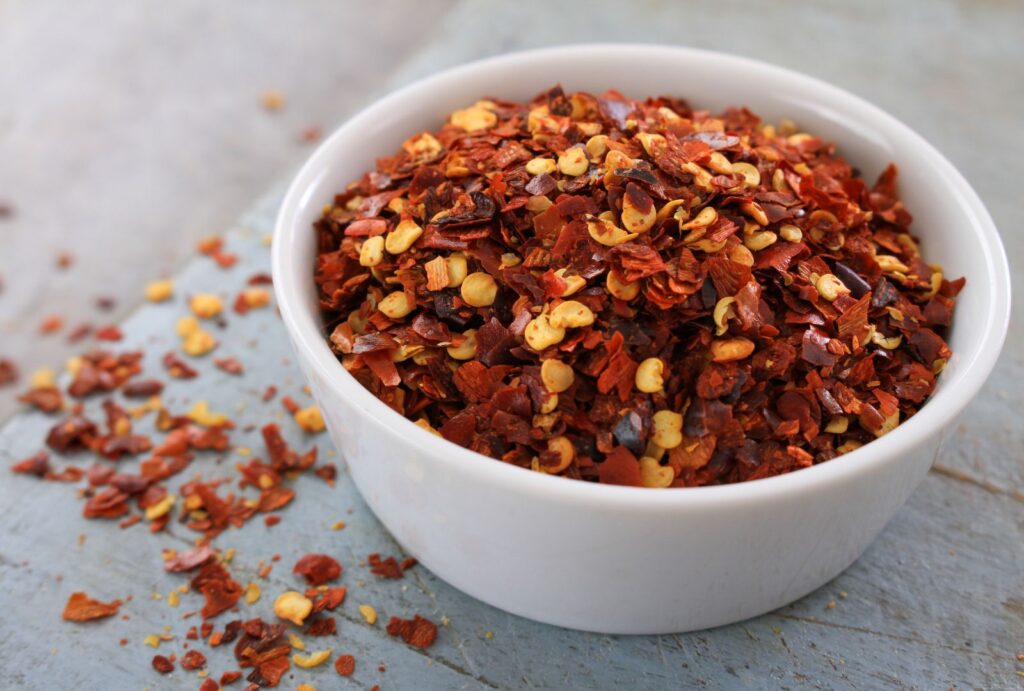
Once dried, peppers can be stored in an airtight container in a cool, dark place for several months. When you’re ready to use them, simply rehydrate the peppers by soaking them in water or broth. The soaking time will depend on the thickness and variety of pepper but typically ranges from 10 to 30 minutes.
Dried peppers can be added directly to dishes for a burst of concentrated flavour. They are commonly used in:
• Soups and stews: Rehydrate dried peppers and add them to soups, chilli and stew recipes for a flavour boost. The peppers will soften as they soak in the liquid.
• Casseroles and pasta sauces: Crumble dried peppers into dishes like lasagna, enchiladas and pasta sauces. The peppers will rehydrate and soften as the dish bakes or simmers.
• Marinades and rubs: Finely chop or grind dried peppers and use them in dry rubs and marinades for meats. The rehydrated peppers will infuse the marinade with flavour.
• Chilli flakes: Hotter dried peppers like jalapenos, serranos and habaneros can be ground or chopped into chilli flakes. To make chilli flakes, finely chop, crush or grind in a mortar and pestle. the chilli flakes can be stored in an airtight jar.
Dried peppers add intense flavour without excess moisture, making them a versatile and convenient ingredient to keep on hand. Experiment with rehydrating and using different varieties of dried peppers.
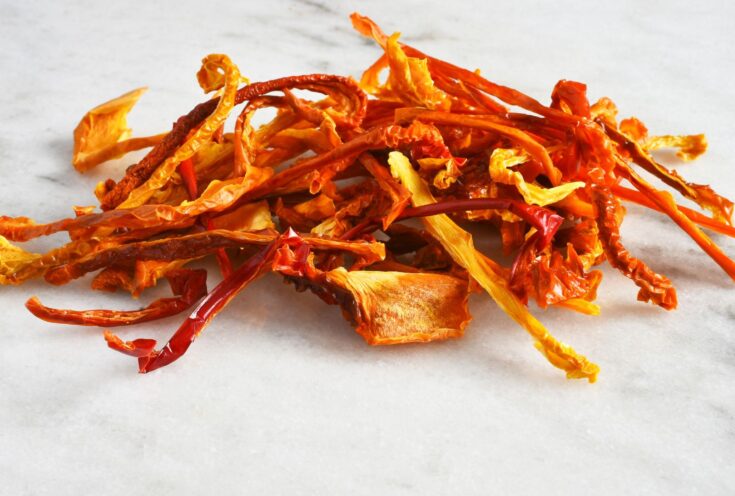
Dehydrating Peppers In An Oven Or Dehydrator
This recipe will guide you through the process of dehydrating peppers to create flavorful and versatile dried peppers that can be used in a variety of dishes. Whether you prefer the mild sweetness of bell peppers or the fiery heat of jalapenos and habaneros, this method works for a wide range of pepper varieties.
Ingredients
- Fresh peppers (bell peppers, jalapenos, serranos, habaneros, etc.)
Instructions
- Wash and dry the peppers thoroughly to remove any dirt or debris. Pat them dry with a paper towel.
- Prepare the peppers according to their thickness and type:
- For bell peppers, poblanos, and Anaheim chiles: Slice them into strips or rings between 1/4 to 1/2 inch thick.
- For thinner chiles like jalapenos, serranos, and habaneros: You can leave them whole or halve them lengthwise. If desired, make a few slits in the skin to allow moisture to escape.
- Dehydrator Method: a. Arrange the pepper slices or halves in a single layer on the dehydrator trays, leaving space between each piece for proper air circulation. b. Set the dehydrator to a temperature between 45 to 60°C (115 to 140°F). b. Dehydrate the peppers for approximately 6 to 12 hours, or until they are dry and brittle. Rotate the trays occasionally for even drying.
- Oven Method: a. Preheat your oven to the lowest temperature setting, usually around 60 to 75°C (140 to 170°F). b. Place the pepper slices or halves directly on the oven racks, ensuring they are in a single layer and not overlapping. c. Prop the oven door open slightly to allow moisture to escape and promote air circulation. d. Dehydrate the peppers for approximately 6 to 12 hours, or until they are dry and brittle. Rotate the racks halfway through the drying process for even drying.
- Once the peppers are completely dry and brittle, remove them from the dehydrator or oven and let them cool completely.
- Store the dried peppers in an airtight container in a cool, dark place. They can be stored for several months.
Notes
Drying time may vary depending on the size, thickness, and moisture content of the peppers, as well as the specific equipment used. Monitor the peppers throughout the drying process to achieve the desired level of dryness.
Recommended Products
As an Amazon Associate and member of other affiliate programs, I earn from qualifying purchases.
